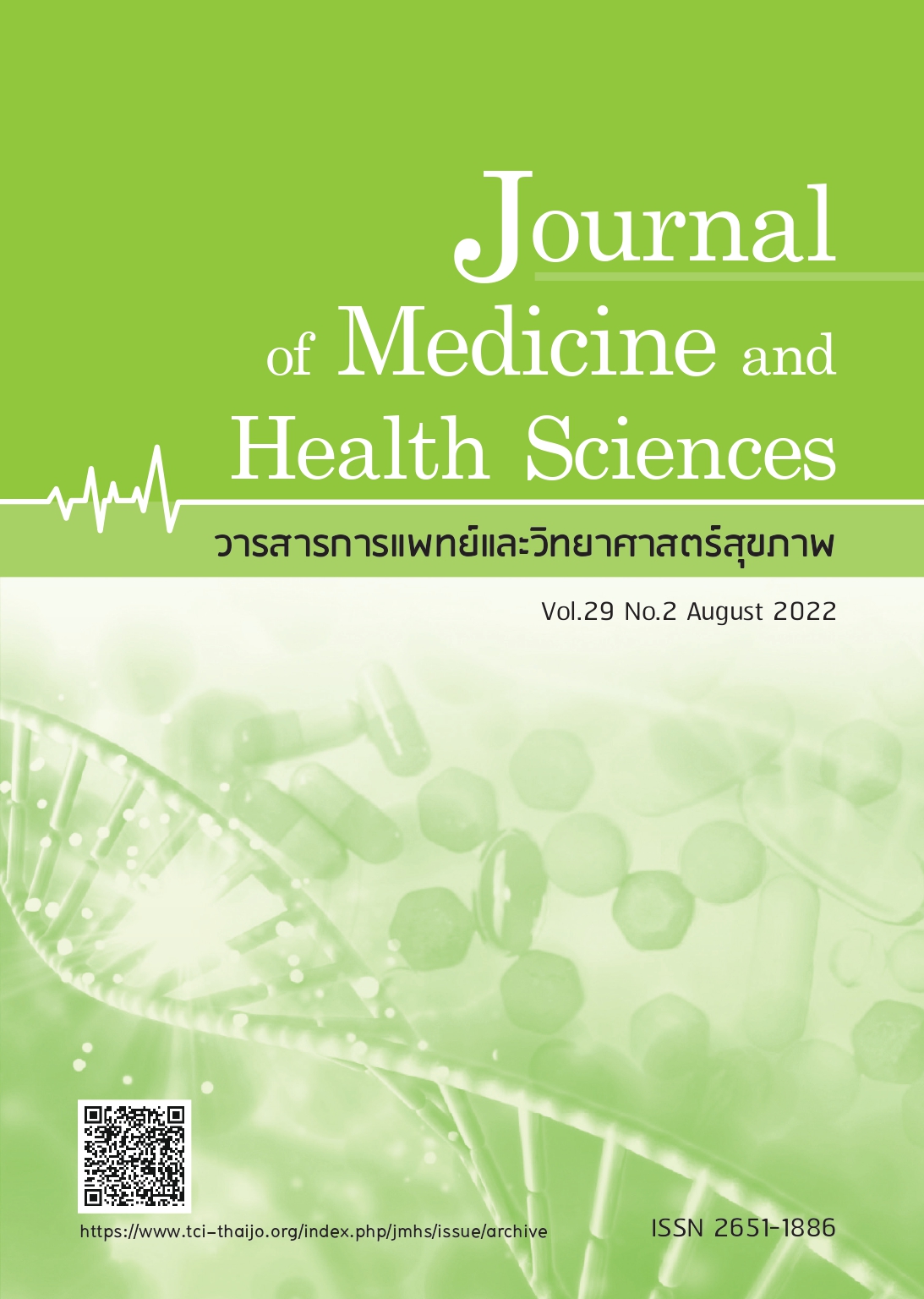Development of “Serng Kra Tib Dancing” exercise model to health status of elderly
Keywords:
exercise, Kratib dance, health status, elderly peopleAbstract
Abstract
Currently, Thailand is facing an increase in the elderly population, a period in which the body deteriorates and physical fitness declines in general. However, increased physical fitness is a way to help slow down such deterioration. Kratib dance exercise is a form of exercise which is suitable for the elderly. Therefore, the objective of this research is to develop and to study the effects of a pattern of exercise with Serng Kratib dancing to promote the health status of elderly people. There were two phases in this research process: Phase 1: the model development phase. The sample consisted of 30 elderly female volunteers from Sam Phrao Village, in the Sam Phrao sub district of the Mueang district in Udon Thani province. The age range of the participants was between 60 to 75 years of age. The purposive selection into two groups, the experimental group and the control group, with 15 people in each. Then, the following process was used: (1) to study the concept of promoting physical fitness among the elderly; (2) to synthesize and summarize the results of the poses of the Kratib dance suitable for the elderly; (3) to develop an exercise course; and (4) to test the validity of the content from 5 experts. The IOC was = 1.0 In phase 2: the evaluation phase, the participants were trained with a 50-minute exercise program of squatting exercises, for three days a week for a total of eight weeks and then their health status was assessed (cholesterol, triglycerides, HDL, LDL blood sugar, resting heart rate and blood pressure) in the pre-training and post-training periods. The statistical analysis was performed using a t-test. The results revealed that it was found that the most of parameters of health status after eight weeks of training had a statistically significant difference (p ≤ 0.05) when compared to before training, except for HDL. When comparing the experimental and control groups, it was found that their health status after the experiment was significantly different at a level of 0.05, except for their diastolic blood pressure and LDL. Therefore, it can be concluded that exercising using an eight-week dance exercise program is an alternative exercise that can promote health status of elderly people.
References
Yodkham M. Health and exercise. Bangkok:Odeonstro; 2005.
Office of the National Economic and Social Development Board. National Economic and Social Development Plan,
No. 12 (2017 - 2021), Bangkok; 2017.
Wongthet S. Singing and dancing: Music and dance of the Siamese. Bangkok: Matichon; 2008.
Sriramatr S. Physical activities for wellness. Bangkok: Chulalongkorn University Printing House; 2014.
Pan-uthai S, Khamphonsiri T, Suwanmanor N. Nursing care for the elderly. Chiang Mai: Faculty of Nursing, Chiang Mai University;2018.
Magnus KK, Anders N, Caroline K. Physical activity, muscle function, falls and fractures. food Nutr Res 2008;52:1-7.
American College of Sports Medicine. ACSM’s advanced exercise physiology. Philadelphia: Lippincott Williams & Wilkins; 2006.
Leelayuwat N. Effect of arm exercise on metabolism. In patients with type 2 diabetes, Khon Kaen University: Khon Kaen; 2006.
Inkhum J, Hinchiranan S, Khanuchai P, et al. A Study of Factors Influencing Exercise Behavior of the elderly with heart disease. Nakhon Nayok Province. Bangkok:Srinakharinwirot University; 1999.
Herrero JL, Khuvis S, Yeagle E, et al. Breathing above the brain stem: volitional control and attentional modulation in humans. J Neurophysiol 2018;1:145-59.
El-Kader A, Shehab M. Aerobic versus resistance exercise training in modulation insulin resistance, adipocytokines and inflammatory cytokine levels in obese type 2 diabetic patients. J Adv Res 2011;2:179-83.
Bassuk, S.S. and Manson, J.E. Epidemiological Evidence for the Role of Physical Activity in Reducing Risk of Type 2 Diabetes and Cardiovascular Disease. J Appl Physiol 2005;99:1193-204.
Genie A, Hikhuathongka T and Suksom D. Effects of Meditation Walking Training on Blood Sugar Control and Stress Reduction in Type 2 Diabetes Patients. JSSH 2014;3: 75-90. (in Thai)
Tripeud K, Malathum P, Hanprasitkam K, et al. A synthesis of research of exercise influencing glycemic control in persons with type 2 diabetes. Rama Nurs J 2010; 16:259-78. (in Thai)
Buaniam K, Panuthai S, Khampolsiri T. Effect of Noraprayuk exercise on glycosylated hemoglobin level among older persons with type 2 diabetes mellitus. Nurs J 2011;38:55-67. (in Thai)
Khongruangrat Y, Vannarit T, Lukkahatai N. Effect of Fawn Mor Lum Klorn exercise on hemoglobin A1c level among persons with type 2 diabetes. Nursing Journal. 2012;3:105-16. (in Thai)
Kobayashi J Nohara A, Kawashiri MA, et al. Serum lipopro lipase mass: clinical significance of its measurement. Clin Chim Acta 2007;378.07-12
LeMura ML, Duvillard von PS, Andreacci J, et al. Lipid and lipoprotein profiles, cardiovascular fitness, body composition, and diet during and after resistance, aerobic and combination training in young women. Eur J Appl Physiol 2000;82:451-8.
Fenkci S, Sarsanet A, Rota S, et al. Effects of resistance or aerobic exercises on metabolic parameters in obese women who are not
on a diet. Adv Ther 2006;23:404-13.
Trejo-Gutierrez, Fletcher G. Impact of exercise on blood lipids and lipoproteins. J Clin Lipidol 2007;1:175-81.
Froelicher VF, Myers J. Exercise and the heart. 5th. Philadelphia: Elsevier, 2000.
Singsawad S, Nicharojana LO and Piaseu N. Impact of Hula Hoop-Assisted Exercise on Healthcare Personnel’s Perceived SelfEfficacy, Waistlines and Levels of HDL Cholesterol and Triglyceride. JTNMC 2012;4:109-22.
Downloads
Published
How to Cite
Issue
Section
License

This work is licensed under a Creative Commons Attribution-NonCommercial-NoDerivatives 4.0 International License.



